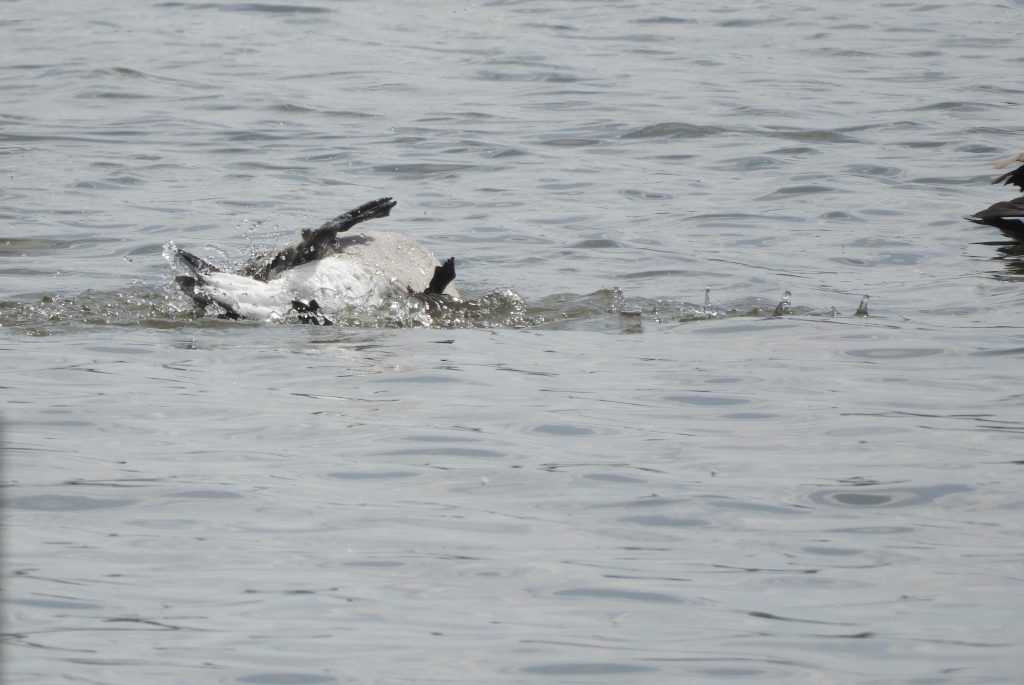September 2 2019. Royal Botanical Gardens, Cootes Paradise, Hamilton, ON. I took Arnold, a non-birding friend, along with me on a transect of really quiet woodlands today, more my idea than his. I outlined my task and the project we’re involved in, promised little and half-expected he’d be a touch bored, but in that I was quite wrong: it was, he said, Amazing! Fascinating! (his words), and for me, heartwarming to hear him exclaim.
Providing domestic demands don’t get in the way, I really expect him to buy binoculars and a field guide on his return. Arnold lives in San Antonio and when I told him that Texas has some of the best birding in the continent he was astonished and energized further. A bit of research showed that a couple of San Antonio birding hot spots are within a mile of his house. It may take a bit of explanation with his family-in-law though who generally view the word ‘birding’ as a duck-hunting term.
Our transect was pretty quiet, we saw just 19 species, but a small flock of migrating Common Nighthawks excited me (Arnold too, I think my enthusiasm rubbed off and he was generally excited about almost everything). And that was about it until near the end when we stood gazing over a shallow lake. It was quite warm and generally uninteresting until a twenty-strong flight of Canada Geese circled and settled not far in front of us. They milled around engaged in some sort of low-key social chatter, preening, and bathing by ducking their wings to scoop and shuffle water over their backs and necks. All birds preen, some bathe in shallow puddles, some bathe in dust, it’s all done to clean and condition flight and body feathers. Canada Geese have all the water they need and are known to bathe including “…head-dipping, which moves water over head, neck, and back, and during more intense bathing, wing beating and flailing of water and occasionally somersaulting.” (Cornell Lab of Ornithology, Birds of North America. From website ) 
We watched them take somersaulting a stage further, energetically turning turtle and paddling their feet to remain upside down, belly up, for several seconds. Curious behaviour and obviously tricky for a creature perfectly designed to float just one way, right side up.
The Bird of the Day could easily have been the Common Nighthawks but the Canada Goose behaviour was absolutely new to me.

